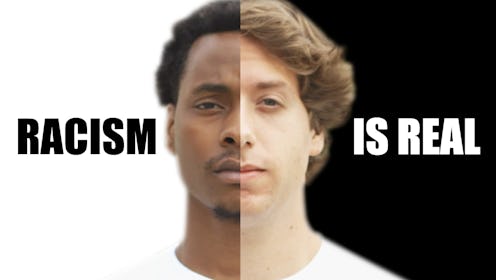Life
Video Compares The Lives Of White And Black People

A new video comparing the daily lives of white and black people ends with a simple, stark sentence: “Racism isn’t over.” The heated protests against police shootings of young black men last year in Ferguson and just this week in Baltimore have brought about much of public discussion about race relations in the U.S. to focus on race and the criminal justice system. However, this video, titled “Racism is Real,” reminds viewers that racial inequality casts a much wider net over the lives of people of color in America. Citing studies and reports from a variety of universities, non-profits, and government agencies, the video shows how racial inequality affects black Americans on a daily basis—yes, in interactions with the police, but also as they look for jobs, purchase cars and houses, and even as they receive medical care.
Something that this video implies but doesn’t outright say is that racism takes many forms. Yes, there are overtly racist people in the world, but a lot racism emerges in these relatively small ways—a slightly more expensive rate on a car, fewer housing options available—that together add up to a much bigger picture of racial inequality, one that is fueled by biases that aren't always readily apparent, or even conscious. In a January 2015 article for The New York Times that discusses many of the studies cited in the video, Sendhil Mullainathan contends that, in much of this research, many people probably weren’t even aware that they were exercising racial bias. He explains that although we think deliberately and consciously about certain factors when we make decisions, we weigh many other factors very quickly and unconsciously, “rely[ing] on intuitive judgment.” Thus, even when people consciously do not want to discriminate, they can unconsciously exercise biases, which, Mullainathan explains, arise from “all the associations we have—from fictional television shows to news reports. They use stereotypes, both the accurate and the inaccurate, both those we would want to use and ones we find repulsive.” If we are to truly combat racial inequality in the U.S., it's important to understand the subtle nature of racial bias and question the roles we may play in it. As Mullainathan suggests, it feels good to point fingers at a clear villain, but that’s not enough to solve the problem. He writes,
Ugly pockets of conscious bigotry remain in this country, but most discrimination is more insidious. The urge to find and call out the bigot is powerful, and doing so is satisfying. But it is also a way to let ourselves off the hook. Rather than point fingers outward, we should look inward — and examine how, despite best intentions, we discriminate in ways big and small.
These are a few of those "big and small" forms of discrimination:
A 2003 University of Chicago study found that résumés featuring stereotypically black names were 50% less likely to get a call back than statistically identical résumés with white sounding names.
A 1995 study in The American Economic Review found that when white and black customers attempted to buy a used car, black customers were offered initial prices approximately $700 higher than their white counterparts.
Multiple reports (including a 1999 report from the ACLU, a 2011 report from the U.S. Department of Justice, a 2013 analysis from the Kalamazoo Department of Public Safety, and a 2015 report from the Connecticut Racial Profiling Prohibition Project) show that black drivers are significantly more likely to be pulled over by police than white drivers.
A 2012 report from the U.S. Department of Housing and Urban Development found that, when trying to purchase a house, realtors showed 17.7 percent fewer homes to black clients than white clients.
In 2013, the ACLU reported that, although rates of marijuana use is similar among white and black people, black people are four times more likely to be arrested for marijuana possession.
According to a 2007 report by The Sentencing Project, the rate of incarceration for African Americans is 5.6 times that of white Americans.
A 1999 study from the New England Journal of Medicine found that physicians were less likely to recommend cardiac catheterization (a procedure used to diagnose and treat heart problems) to their black patients than their white ones, even when their medical histories were the same.
A 2011 study in the American Journal of Political Science found that white legislators of both parties were less likely to respond to emails from stereotypically black names than names that sounded white.
Watch the whole video:
Images: YouTube (9)